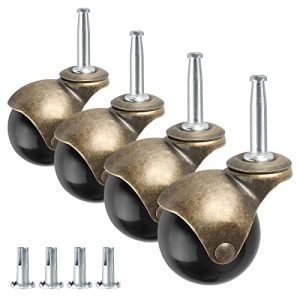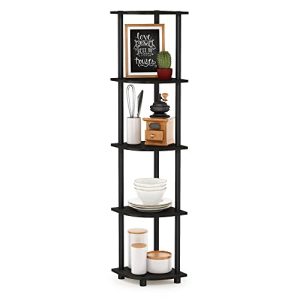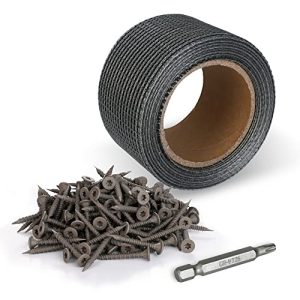Have you ever stared at a pile of furniture parts, unsure where to start? Assembling furniture can feel overwhelming, frustrating, and time-consuming.
But what if you could turn that confusion into confidence? You’ll discover simple steps and clever tips that make putting your furniture together easier than you ever imagined. By the end, you’ll not only save time but also enjoy the satisfaction of building something with your own hands.
Ready to transform your space without the stress? Let’s get started.

Credit: furnishedwithstyle.co.uk
Choosing The Right Tools
Choosing the right tools is a crucial step in assembling furniture efficiently and safely. The right tools not only make the job easier but also help you avoid damage to the furniture or injury to yourself. Before you start, take a moment to consider what tools you’ll need and how each will impact your work.
Essential Tools Checklist
Having a basic set of tools ready can save you a lot of hassle. Some tools are almost always necessary, regardless of the type of furniture.
- Screwdrivers:Both flathead and Phillips head are must-haves for most furniture assembly.
- Allen wrenches:Often included with flat-pack furniture, but having a set of different sizes is handy.
- Hammer:Useful for tapping dowels or nails into place gently.
- Measuring tape:Ensures parts fit correctly and helps keep everything aligned.
- Pliers:Great for gripping small parts or bending wires.
Have you ever started assembling furniture only to realize you’re missing a simple tool? It disrupts your flow and increases frustration. Prepare your toolkit before you begin to avoid this.
Using Power Vs. Manual Tools
Power tools can speed up the assembly process significantly. Cordless drills, for example, can drive screws faster and with less effort than manual screwdrivers.
However, manual tools offer better control and reduce the risk of stripping screws or damaging delicate parts. Sometimes, a gentle touch works better than brute force.
Think about the type of furniture and your comfort level. Would you rather have the speed of a power drill, or the precision of a manual screwdriver? You might find using both in combination works best.
Tool Safety Tips
Safety is often overlooked but must never be ignored. Always wear protective gloves to avoid cuts and splinters.
Keep tools clean and well-maintained; a dull or damaged tool can cause accidents. Never force a tool to do a job it’s not designed for.
Have you checked that your workspace is well-lit and free of clutter? A tidy area reduces trip hazards and helps you focus better on the assembly.
Preparing Your Workspace
Preparing your workspace sets the tone for smooth furniture assembly. A well-prepared area helps avoid mistakes and saves time. It also keeps parts and tools easy to find. Clear space, protect surfaces, and ensure good light and air. These steps create a safe and comfortable environment for building.
Clearing And Organizing The Area
Start by removing all clutter from the workspace. Move furniture, boxes, and other items out of the way. Leave enough room to lay out parts and tools. Organize screws, bolts, and small pieces in containers or trays. Group items by type or step to prevent confusion. A tidy space reduces stress and speeds up assembly.
Protecting Floors And Surfaces
Cover floors with old blankets, cardboard, or drop cloths. This prevents scratches, dents, and stains during assembly. Use protective pads under heavy parts or tools. Protect tables or counters by placing soft mats or cloths. Take care to keep the workspace clean and safe. Protecting surfaces keeps your home damage-free.
Lighting And Ventilation
Good lighting helps you see instructions and small parts clearly. Use natural light or bright lamps focused on the workspace. Avoid shadows that make tasks harder. Keep the area well-ventilated by opening windows or using fans. Fresh air keeps you comfortable and alert. Proper light and air improve focus and reduce mistakes.
Reading Assembly Instructions
Clear assembly instructions help make furniture building easier and faster. Reading each step carefully avoids mistakes and saves time. Understanding pictures and words together guides the process smoothly.
Reading Assembly Instructions Assembling furniture can be both exciting and daunting. The secret to a smooth experience often lies in understanding the assembly instructions. Many people tend to skim through them, only to find themselves confused halfway through the process. Taking a moment to dive into the details can save you time and frustration.
Identifying Key Steps
Before you start, look for the main steps outlined in your instructions. These are usually highlighted or numbered. By focusing on these key steps, you can create a mental roadmap of the assembly process. This approach helps you anticipate what comes next and prepares you for potential challenges. Have you ever tried assembling a bookshelf and ended up with extra screws? Identifying key steps can prevent such mishaps. It ensures that you don’t overlook crucial parts or skip essential actions.
Common Symbols And Terms
Instruction manuals often use symbols and specific terms that can be confusing. Familiarizing yourself with these can make a big difference. Most manuals include a legend or a key that explains the symbols used throughout. Consider symbols like arrows indicating the direction of screws or icons showing where to attach parts. Understanding these symbols allows you to execute each step with precision. This knowledge can transform a seemingly complex diagram into a simple guide.
Tips For Following Complex Diagrams
Complex diagrams can be intimidating, but breaking them down can make them manageable. Start by identifying each part and its corresponding label in the diagram. Cross-reference these with the parts list to ensure you have everything you need. Use a highlighter or pen to mark off each step as you complete it. This visual cue keeps you on track and minimizes the chance of skipping steps. Have you ever wondered why some people assemble furniture with ease while others struggle? It often comes down to their ability to interpret and follow diagrams accurately. Adopting these tips can place you among the former group.
Sorting And Checking Parts
Sorting and checking parts is a crucial stage that sets the tone for your entire furniture assembly. Skipping this can lead to frustration, wasted time, or even damage to your new piece. Taking a few moments to carefully organize and verify all components ensures a smoother, more efficient build.
Unboxing And Organizing Components
Start by opening the box carefully to avoid damaging any parts. Spread everything out on a clean surface with plenty of room to move around.
Group similar items together, like wooden panels, screws, and tools. This makes it easier to spot what you have and what you might be missing later.
Using small containers or trays for tiny pieces like screws can prevent them from getting lost. Have you ever lost a critical screw and had to stop midway? Avoid that hassle by staying organized from the start.
Verifying Hardware And Pieces
Next, check each part against the instruction manual’s list or diagram. Tick off items as you confirm their presence.
Look closely at hardware sizes and types—sometimes screws look similar but serve different purposes. Mixing them up can cause assembly problems or damage.
Do a quick quality check too. Are any parts cracked, warped, or rough? Identifying issues early saves you from surprises when you’re halfway through building.
Handling Missing Or Damaged Items
If you find something missing or damaged, don’t panic. Contact the seller or manufacturer immediately with details and photos.
Many companies offer replacement parts quickly, but delays can happen. Having a backup plan, like borrowing tools or parts, can keep you moving forward.
Have you ever faced this situation? What did you do to keep your project on track? Sharing your approach might help others avoid similar roadblocks.
Step-by-step Assembly Strategies
Assembling furniture can feel overwhelming, but breaking the process into clear, manageable parts makes it much easier. Focusing on the frame first, then securing joints, and finally avoiding common mistakes will save you time and frustration. Let’s dive into these practical strategies that anyone can apply.
Starting With The Frame
The frame is the backbone of your furniture. Begin by laying out all the frame pieces on a flat surface to ensure you have everything. This step helps you visualize the final product and reduces the chance of missing parts.
Check each piece for damage or defects before assembly. Align pieces carefully and loosely fit them together to test the overall structure. This approach prevents forcing parts into place later, which can cause damage.
Securing Joints And Fasteners
Once the frame fits well, start tightening joints and adding fasteners. Use the right tools—screwdrivers, Allen wrenches, or drills—to avoid stripping screws or damaging surfaces. Don’t overtighten; snug is usually enough to hold parts securely without warping.
Keep fasteners organized to avoid confusion. I learned this the hard way when I mixed up screws, causing delays. Label screws or use small containers to separate them as you work. This simple step keeps your workflow smooth.
Avoiding Common Assembly Mistakes
Many people rush and skip reading instructions, leading to errors. Take time to understand the manual, especially the diagrams. They often reveal hidden steps or orientation details.
Double-check orientation before drilling or screwing pieces together. A wrong turn can mean disassembling and starting over. Ask yourself: Have I aligned this part correctly? Is this the right screw?
Lastly, don’t ignore your workspace. A cluttered or poorly lit area makes it easy to lose small parts or misread instructions. Set up a clean, well-lit space to keep everything in sight and your assembly stress-free.

Credit: www.mrhandyman.com
Maximizing Efficiency
Efficiency matters a lot when assembling furniture. It saves time and reduces frustration. Simple habits and smart planning make the process smoother. Focus on clear steps and easy organization. This helps finish the job faster and with less effort.
Working With A Partner
Having someone to help speeds up the work. One can hold pieces steady while the other screws or fits parts. Two people can share tasks, making everything easier. Communication is key to avoid mistakes and save time.
Time-saving Shortcuts
Look for ways to skip unnecessary steps. Pre-sort all parts before starting. Use power tools instead of manual ones when possible. Tighten screws only halfway at first, then fully secure them later. This keeps parts aligned and cuts down rework.
Keeping Tools And Parts Accessible
Arrange tools and parts within arm’s reach. Use trays or containers to keep small items organized. Avoid searching for things mid-assembly. A clean workspace speeds up the process and reduces errors.
Troubleshooting Assembly Issues
Assembly issues can turn a straightforward furniture project into a frustrating experience. But don’t let these hiccups stop you. With some patience and the right approach, you can tackle common problems and get your furniture looking perfect.
Fixing Misaligned Parts
Misaligned parts are one of the most frequent annoyances during assembly. If a hole or joint doesn’t line up, don’t force it. Instead, double-check the instructions and parts list to make sure you’re using the right pieces in the right spots.
If everything seems correct, try loosening adjacent screws slightly. This can give you the wiggle room needed to realign parts properly before tightening everything again. Have you noticed how small adjustments can solve what seems like a big problem?
Dealing With Stuck Screws
Stuck screws can quickly derail your progress. If a screw won’t budge, first check if you’re using the right screwdriver size and type. Using the wrong tool can strip the screw head, making it harder to remove.
Apply a little penetrating oil or even a drop of household oil to loosen the screw. Let it sit for a few minutes before trying again. Sometimes tapping gently with a hammer on the screwdriver handle can help break the screw free without damage.
Adjusting For Stability
Once assembled, your furniture should feel solid and stable. If it wobbles or feels uneven, don’t ignore it. Small adjustments like tightening loose screws or adding furniture pads under legs can make a big difference.
Check that the furniture is on a flat surface and that all legs touch the floor evenly. Ask yourself: could a missing washer or uneven floor be causing the issue? These simple checks can save you from future headaches and ensure your furniture lasts longer.
Finishing Touches
Finishing touches are essential to complete your furniture assembly. They ensure your piece looks great and functions well. Taking time to clean, check, and maintain adds value and longevity to your furniture.
Cleaning Up Residue And Debris
Remove dust, wood shavings, and leftover packaging. Use a soft cloth or vacuum cleaner for small particles. Check corners and crevices carefully. Sticky residues from adhesives or tape may need mild soap and water. Avoid harsh chemicals that can damage the surface.
Checking For Safety And Stability
Test all joints and screws to confirm they are tight. Gently shake the furniture to detect any wobbling. Tighten loose bolts or screws immediately. Ensure moving parts like drawers and doors open smoothly. Replace any damaged or missing parts before use.
Maintaining Your Furniture
Keep your furniture clean with regular dusting. Use coasters or pads to protect surfaces from scratches. Avoid placing furniture in direct sunlight to prevent fading. Tighten screws and bolts periodically to keep stability. Treat wood surfaces with polish or oil for protection.

Credit: store.dekotools.com
Frequently Asked Questions
What Tools Are Essential For Assembling Furniture?
Basic tools include a screwdriver, hammer, Allen wrench, and measuring tape. These help ensure accurate and secure assembly.
How Can I Avoid Mistakes When Assembling Furniture?
Read the instructions carefully and organize all parts before starting. Work on a flat surface and follow steps in order.
How Long Does Furniture Assembly Usually Take?
Assembly time varies by complexity but typically ranges from 30 minutes to 2 hours for most items.
Should I Assemble Furniture Alone Or With Help?
Small items can be assembled alone, but larger pieces often require an extra set of hands for safety.
Conclusion
Assembling furniture can be simple with the right steps and tools. Take your time and follow instructions carefully. Use patience to avoid mistakes and ensure stability. Enjoy the sense of pride when your furniture stands firm. Remember, practice improves your skills and speeds up the process.
Keep your workspace clean and organized for safety. Soon, you will feel more confident building furniture on your own. Small efforts bring great results. Keep trying and learn from each project.








